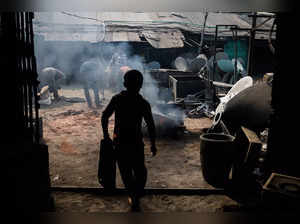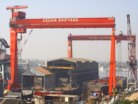 iStock
iStockNow, a newly developed quantitative approach may help raise its prominence as an environmental, social and governance issue. The AI-driven tool, known as the Child Labor Index, scores companies in three areas: disclosure levels, public perception and the commodity-level exposure of the supply chain to child labor. Fund managers can use the scores to pinpoint high-risk companies and identify others that need to confront the issue.
Among investors, “the level of awareness of child labor is incredibly low,” said Eleanor Harry, chief executive and founder of HACE, the UK-based startup that developed the index. “This will help them monitor risk in their portfolio.”
At least 160 million children, or one in 10, are part of the global workforce—and climate change is a “threat multiplier,” according to recent research published by the International Labour Organization. The United Nations agency found that “a growing number of studies consistently support the view that poverty induces households to rely more on child labor.”
That’s especially true in agriculture, where 70% of all child labor is found. As environmental disasters push more people into poverty, families are forced to pull children from school and put them to work in farm and field.
Villages in Cambodia and Tanzania that were hit by drought, flood and crop failure had much higher levels of child labor, according to the ILO. In Uganda and Pakistan, higher food prices made child labor more likely among non-agricultural families. A similar dynamic is unfolding in Peru, Ethiopia, Nepal and Ivory Coast, the Food and Agriculture Organization reported.
While richer countries have tougher production standards, they aren’t immune to the risk. Last year, a US child-labor scandal triggered a crisis for a meatpacking company owned by private equity firm Blackstone Inc. In October, the US Department of Labor confirmed a child-labor probe of American food giants Tyson Foods Inc. and Perdue Farms Inc. A recent analysis done by a firm owned by Goldman Sachs Group Inc. showed the US has slipped in its supply-chain ranking as a result of child-labor violations.
Regulators are now pushing companies and investors to do more. Under the European Union’s Corporate Sustainability Due Diligence Directive, companies face legal liability if they fail to address environmental and human-rights violations, including child labor, in their supply chains.
In March, the EU also agreed to adopt a regulation to prohibit products made using forced labor from being sold in, or exported from, the EU market. In Canada, a new act took effect in January seeking to end forced and child labor in corporate supply chains.
The Child Labor Index aims to help asset managers, pension funds and other investors monitor 55,000 publicly traded companies to see which ones are aligned and which ones may be falling short of the new rules.
Alerting investors to their exposure to the risk can throw up surprises, Harry said. For example, an asset manager may be unaware of the true extent of child-labor risk for certain climate-transition commodities, such as tin used in solar panels, lithium for batteries or even sugarcane used for some forms of renewable energy.
“They may not know about the child labor associated with zinc, silver, gold or blueberries,” Harry said. “But they can click through to each commodity and see what the risk looks like.”
Rather than manually going through data sources, HACE’s artificial-intelligence technology scans thousands of news sources, corporate disclosures and other information to assign a score between 1 and 100 for a company’s disclosure level, public perception of its child labor risk and the possible exposure in its supply chain. The use of AI helps eliminate human bias that may affect the scores.
“We’re creating data points and engagement guidance that investors can use” to then push companies to tackle child labor, said Harry, who founded HACE in 2020.
HACE’s AI platform is now being tested by a few asset managers and the expectation is that it will be commercially available later this year.











 Get Unlimited Access to The Economic Times
Get Unlimited Access to The Economic Times
